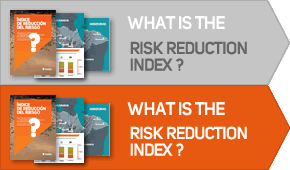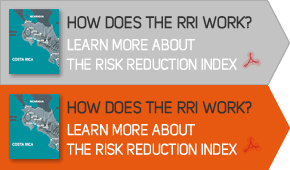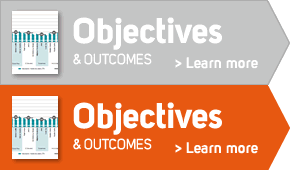“The policy and strategy frameworks for DRR are not focused on addressing the underlying risk drivers and are not linked to local and sectoral actions.” -UNISDR, GAR/DRR 2009: Risk and poverty in a changing climate. Investing today for a safer tomorrow.
The Risk Reduction Index is an action-oriented research project that provides in-depth analysis, carried out within well-defined geographical areas, of existing conditions and capacities that either prevent or enable local and national actors to carry out effective risk management. Capacities are understood as human resources available to manage risks, while conditions are the frameworks (including norms, laws, legislations, codes and agreements) within which actors perform.
To measure the progress on effective risk management, different systems of indicators and instruments have been developed in recent years. However, their analysis revealed that none of them adequately measured or considered the underlying risk factors (Hyogo Framework for Action, Priority Four). According to the UNISDR 2009 Global Assessment Report on Disaster Risk Reduction (GAR/DRR), this is the HFA priority area where the least progress has been made.
With this in mind, the RRI analyses the capacities and conditions for disaster risk reduction (DRR) and climate change adaptation (CCA) through the identification of four drivers of risk:
- Risk Driver 1: Environment and natural resources.
- Risk Driver 2: Socioeconomic conditions.
- Risk Driver 3: Land use and the built environment.
- Risk Driver 4: Governance.
Mapping the conditions and capacities through the analysis of these four risk drivers, the RRI provides a picture of the many factors that either support or hinder the effectiveness of efforts to reduce and manage disaster risk at the local, regional and national levels.





Share this